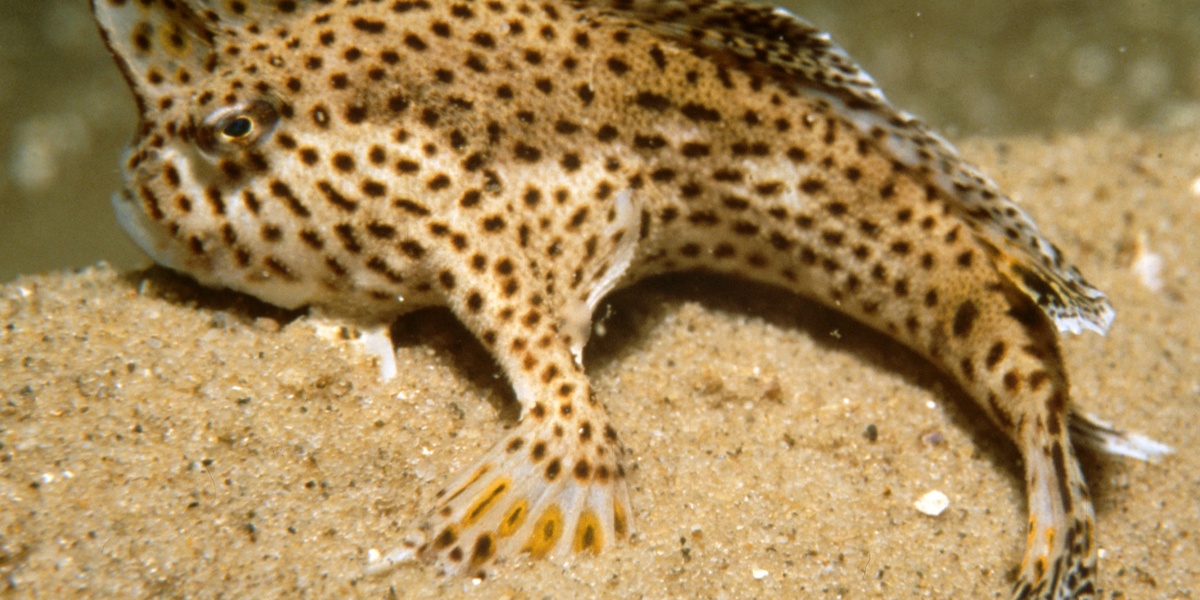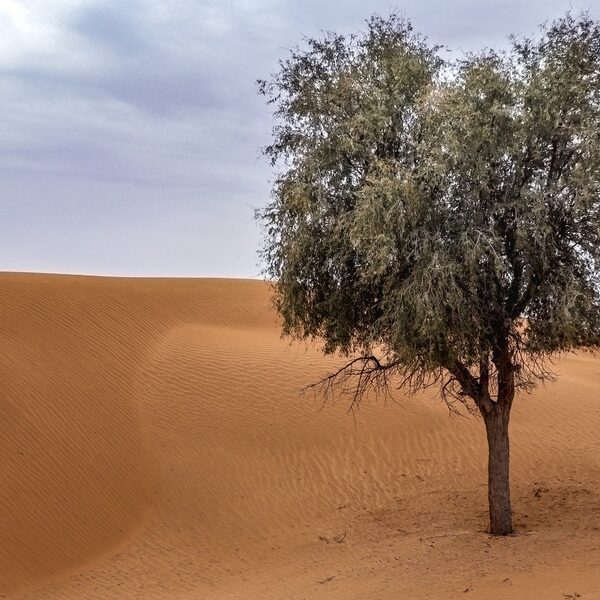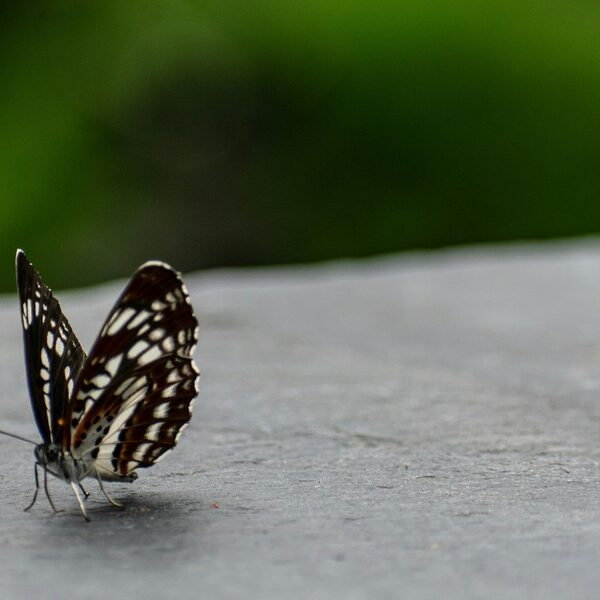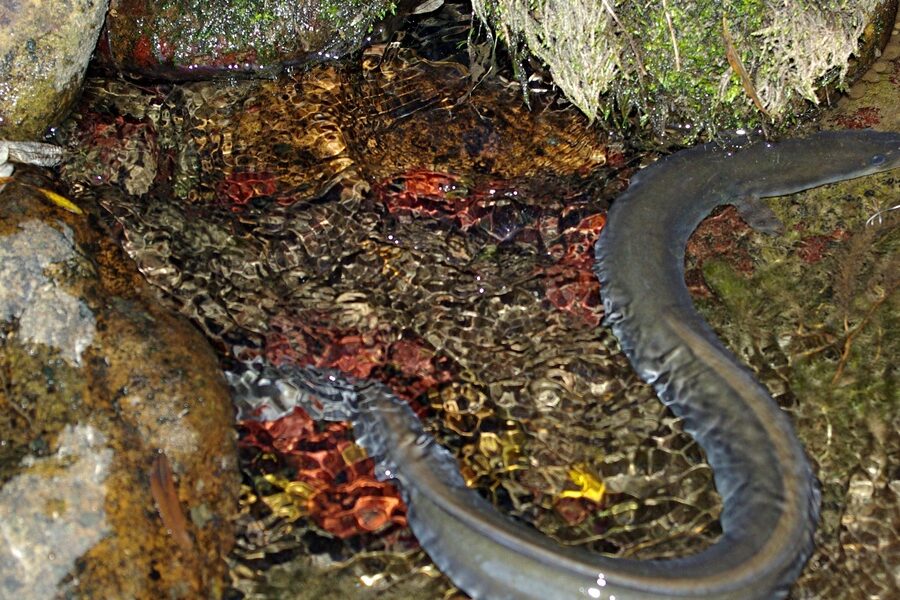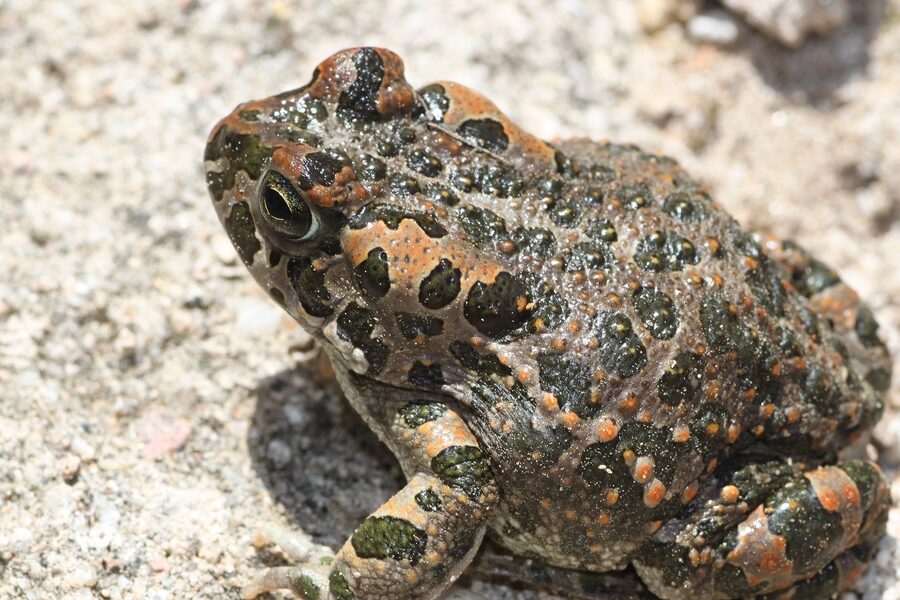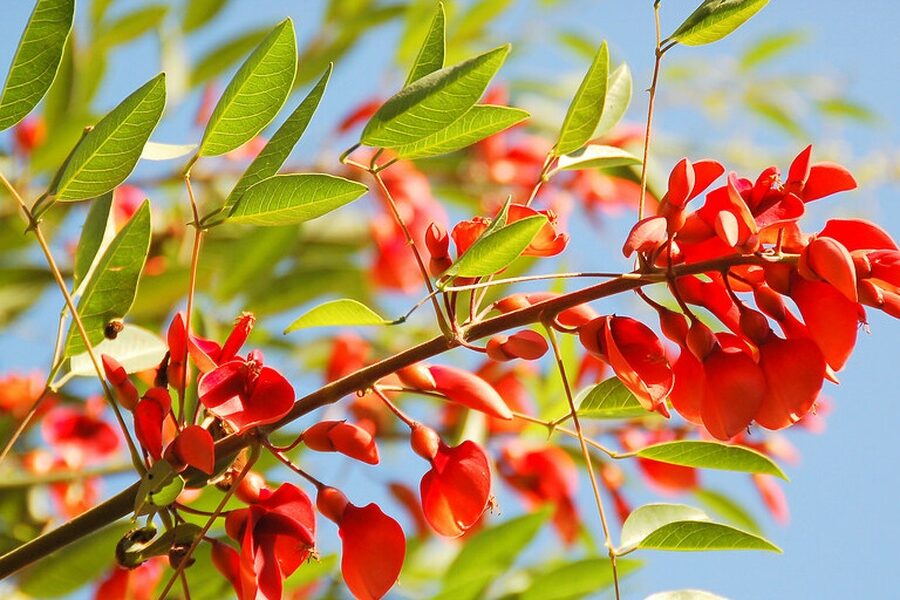Australia is renowned for its unique wildlife, and its aquatic environments are no exception. From bustling coral reefs to expansive river systems, the waters surrounding and within the continent teem with diverse and often extraordinary marine and freshwater species.
To help you explore this incredible biodiversity, we’ve compiled a comprehensive list. Below, you’ll find details on 30 Fish of Australia, showcasing a wide variety from the freshwater Australian bass to the ocean-dwelling Yellowtail kingfish. For each entry, we’ve provided key information including its Scientific Name, Habitat, and Max Length (cm), organized for easy reference.
What makes Australian fish unique?
Many Australian fish species are endemic, meaning they are found nowhere else in the world, a result of the continent’s long geographical isolation. They’ve also adapted to an extraordinary range of habitats, from the icy Southern Ocean to tropical coral seas and arid inland rivers, leading to incredible diversity in their appearance, behavior, and survival strategies.
Are there many freshwater fish in Australia?
While Australia is often known for its marine life, the continent also boasts a significant number of unique freshwater fish species. These can be found in a vast network of rivers, lakes, and billabongs, especially in the Murray-Darling Basin, the tropical north, and the southwest. Many of these species play vital ecological roles and are a focus for conservation efforts.
Fish of Australia
| Fish Name | Scientific Name | Habitat | Max Length (cm) |
|---|---|---|---|
| Australian lungfish | Neoceratodus forsteri | Freshwater rivers and billabongs | 150 |
| Murray cod | Maccullochella peelii | Murray-Darling freshwater rivers | 180 |
| Barramundi | Lates calcarifer | Estuaries, coastal rivers and reefs | 180 |
| Golden perch | Macquaria ambigua | Freshwater rivers and billabongs | 80 |
| Australian bass | Macquaria novemaculeata | Estuaries and coastal rivers | 60 |
| Great white shark | Carcharodon carcharias | Coastal seas and continental shelf | 640 |
| Whale shark | Rhincodon typus | Open ocean and reefs (feeding migrations) | 1,200 |
| Reef manta | Manta alfredi | Coastal reefs and offshore cleaning stations | 550 |
| Bumphead parrotfish | Bolbometopon muricatum | Coral reefs | 130 |
| Coral trout | Plectropomus leopardus | Coral reefs | 100 |
| Spanish mackerel | Scomberomorus commerson | Coastal and offshore tropical waters | 200 |
| Yellowfin tuna | Thunnus albacares | Pelagic offshore waters | 240 |
| Snapper | Chrysophrys auratus | Inshore reefs and coastal waters | 100 |
| Australian salmon | Arripis trutta | Coastal pelagic waters | 80 |
| Giant trevally | Caranx ignobilis | Reefs and coastal waters | 170 |
| Yellowtail kingfish | Seriola lalandi | Coastal reefs and pelagic zones | 200 |
| Blue groper | Achoerodus viridis | Rocky reefs and kelp forests | 125 |
| Orange roughy | Hoplostethus atlanticus | Deepwater continental slopes | 75 |
| Weedy seadragon | Phyllopteryx taeniolatus | Seaweed and seagrass beds | 45 |
| Leafy seadragon | Phycodurus eques | Seagrass and kelp beds | 35 |
| Spotted wobbegong | Orectolobus maculatus | Rocky reefs and sandy bottoms | 300 |
| Port Jackson shark | Heterodontus portusjacksoni | Rocky reefs and bays | 120 |
| Mulloway | Argyrosomus japonicus | Estuaries and coastal waters | 200 |
| Sand flathead | Platycephalus fuscus | Estuaries and sandy bottoms | 120 |
| Black bream | Acanthopagrus butcheri | Estuaries and coastal lagoons | 60 |
| King George whiting | Sillaginodes punctatus | Seagrass beds and sandy bottoms | 80 |
| Southern bluefin tuna | Thunnus maccoyii | Open ocean and migratory waters | 250 |
| Giant grouper | Epinephelus lanceolatus | Coral reefs and rocky areas | 300 |
| Moorish idol | Zanclus cornutus | Coral reefs | 23 |
| Longfin eel | Anguilla reinhardtii | Freshwater rivers and estuaries | 200 |
Images and Descriptions
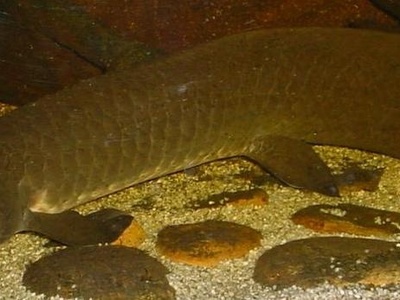
Australian lungfish
A living fossil with lungs and lobed fins, the Australian lungfish breathes air and survives in slow rivers and billabongs. It grows large, moves slowly, and has a stout body with small scales, feeding on invertebrates and plant matter.
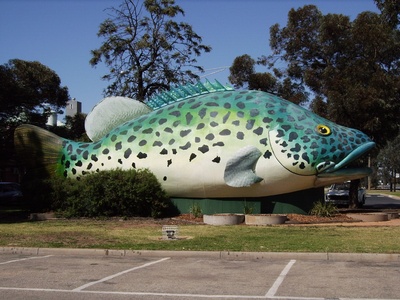
Murray cod
A large freshwater predator, Murray cod has a broad head, mottled green-brown coloring and a huge mouth. Native to the Murray–Darling basin, it can live decades, reach large sizes and is prized by anglers and conservationists.
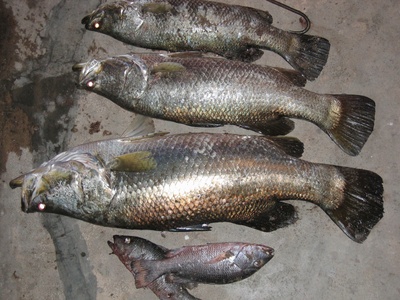
Barramundi
Barramundi are prized sport and food fish with silvery scales, a slightly concave forehead and powerful tail. They move between estuaries and freshwater, tolerate varying salinity, and can grow very large, ambushing prey such as fish and crustaceans.
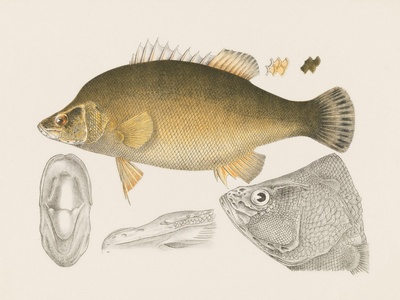
Golden perch
Golden perch have a deep-bodied shape and golden-olive hues. Common in inland rivers and billabongs, they migrate seasonally, tolerate turbid water and are known for strong fighting when hooked, making them popular with recreational fishers.
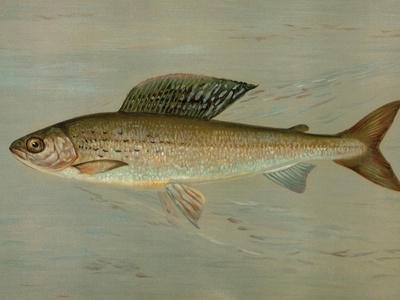
Australian bass
Australian bass are schooling estuarine fish with dark, laterally compressed bodies and a silvery sheen. They migrate between rivers and estuaries, spawn in tidal waters, and are valued by anglers for their spirited strikes and accessibility near shore.
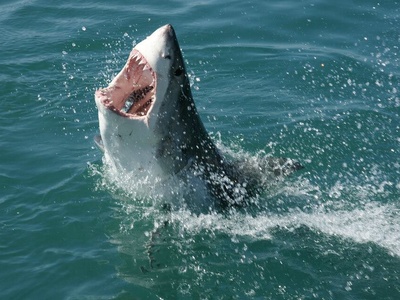
Great white shark
Great white sharks are apex predators with torpedo-shaped bodies, serrated teeth and keen senses. Found around Australia’s coasts, they undertake long migrations, prey on marine mammals and fish, and inspire both fear and fascination in scientists and the public.
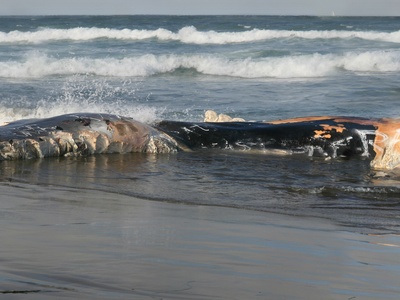
Whale shark
Whale sharks are gentle filter-feeding giants with spotted skin patterns and enormous mouths. They migrate to Australian waters to feed on plankton and small fish, are often seen at Ningaloo and the Great Barrier Reef, and are protected by conservation measures.
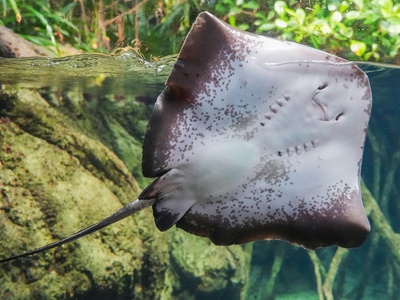
Reef manta
Reef manta rays have triangular pectoral fins, distinctive facial markings and reach impressive wingspans. Frequenting cleaning stations on tropical reefs, they feed on plankton, show site fidelity and are a charismatic draw for divers on the Great Barrier Reef and Ningaloo.
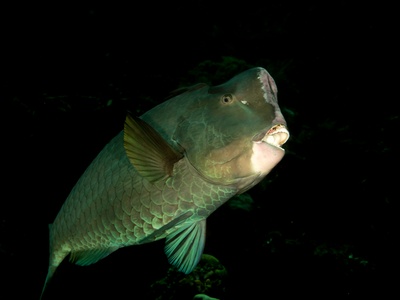
Bumphead parrotfish
Bumphead parrotfish are hefty reef herbivores with a blunt forehead and strong beak used to scrape coral. They form daytime schools, create characteristic bite scars on reefs, and play an important role in reef ecology by bioerosion and sediment production.
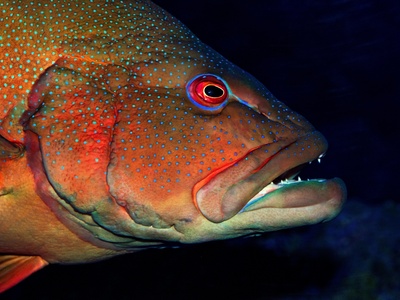
Coral trout
Coral trout are colorful reef groupers with reddish-orange bodies and blue spots. Ambush predators on coral slopes, they are commercially important and popular with anglers, but vulnerable to overfishing in some regions of Australia where reef fisheries are closely managed.
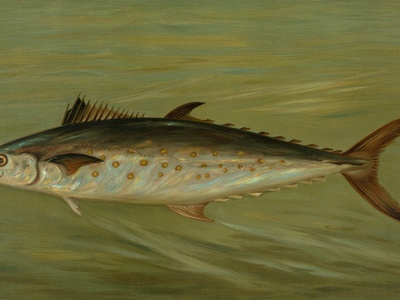
Spanish mackerel
Spanish mackerel are fast pelagic predators with streamlined bodies and spotted flanks. They patrol coastal and offshore waters, forming schools and feeding on schooling fish. Highly prized by recreational fishers, they are sought for speed, fight and quality flesh.
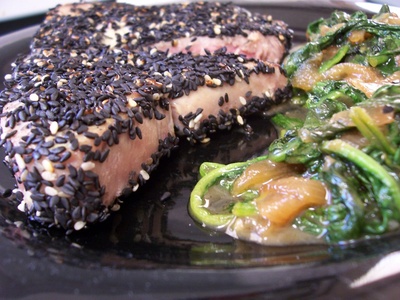
Yellowfin tuna
Yellowfin tuna are powerful, schooling pelagic fish recognized by bright yellow fins and a streamlined body. They migrate widely, supporting lucrative commercial and sport fisheries, and are pursued for their strength, speed and value as sashimi-grade fish.
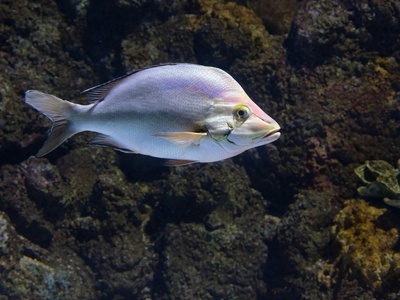
Snapper
Snapper are robust, pinkish reef fish with a strong profile and stout teeth. Found in rocky reefs and coastal waters, they are a cornerstone of recreational fishing around southern Australia and valued for their firm, white flesh.
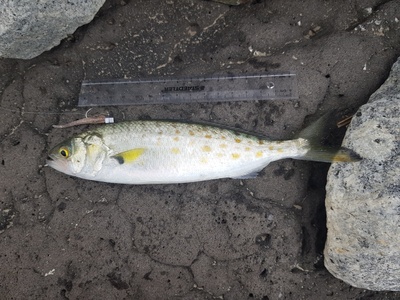
Australian salmon
Australian salmon are schooling coastal fish often found in surf zones and bays. They travel in large shoals, make seasonal runs along the coast and are popular with shore anglers despite their unrelatedness to true salmon species.
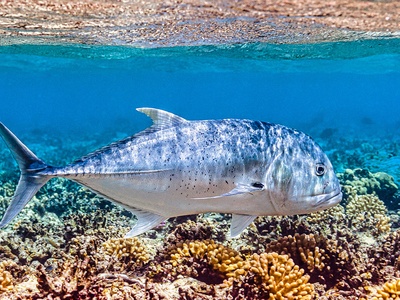
Giant trevally
Giant trevally are muscular predatory jacks with silvery bodies and powerful tails. They ambush prey around reefs, mangroves and drop-offs, famous for explosive strikes and strength, making them a top trophy target for game fishers across northern Australia.
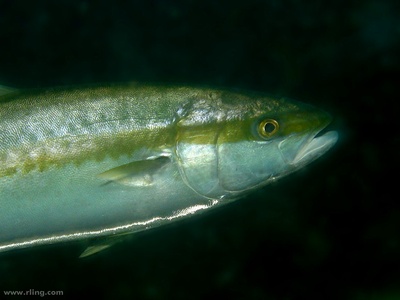
Yellowtail kingfish
Yellowtail kingfish are fast, torpedo-shaped predators with yellow tails and schooling habits. Found around reefs and coastal waters, they are highly regarded by anglers for fighting ability and as a versatile table fish with firm, oily flesh.
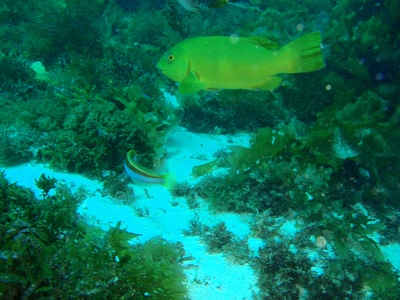
Blue groper
Blue groper are charismatic reef fish with thick lips and strong jaws; males turn bright blue. They occupy rocky reefs and kelp beds, feeding on invertebrates and sculpting local communities. Protected in many reserves, they are emblematic on southeastern coasts.
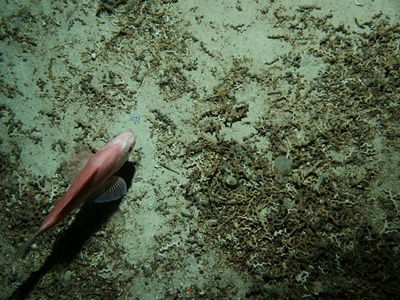
Orange roughy
Orange roughy are slow-growing, long-lived deepwater fish with bright orange-red coloration. Found on continental slopes and seamounts, they mature late and their populations are vulnerable to overfishing, prompting strict management for this commercially valuable species.
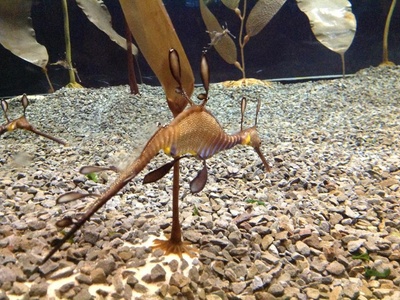
Weedy seadragon
Weedy seadragons are delicate, leaf-like relatives of seahorses with elongated bodies and leaf-like appendages for camouflage. Endemic to southern Australia, they inhabit kelp and seagrass beds, feed on tiny crustaceans and captivate divers with their strange beauty.

Leafy seadragon
Leafy seadragons are exquisitely camouflaged fish resembling drifting seaweed, with leaf-like appendages and delicate bodies. Endemic to southern Australian coasts, they move slowly through seagrass and kelp, feeding on small crustaceans and relying on camouflage to avoid predators.
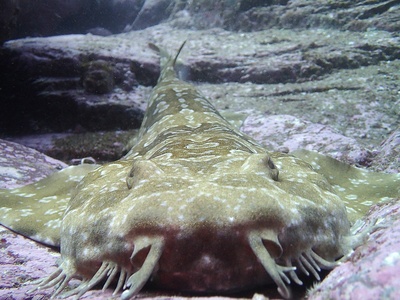
Spotted wobbegong
Spotted wobbegongs are flattened carpet sharks with ornate skin patterns and fringed lobes that camouflage them on reefs. They are ambush predators, resting on the seabed during the day and feeding at night, occasionally surprising divers with close encounters.
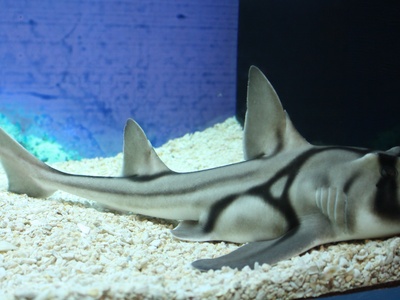
Port Jackson shark
Port Jackson sharks are stocky, nocturnal bottom-dwellers with patterned bands and a blunt snout. Found in bays and rocky reefs, they lay spiral egg capsules and feed on molluscs and crustaceans, being harmless to humans and a familiar sight to snorkelers.
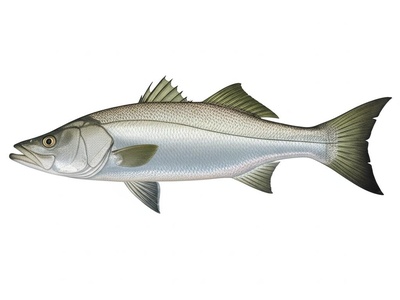
Mulloway
Mulloway are large estuarine predators with elongated bodies, silvery flanks and heavy tails. They move between estuaries and coastal waters, often nocturnal, growing to impressive sizes and forming a popular target for night-time anglers seeking trophy fish.
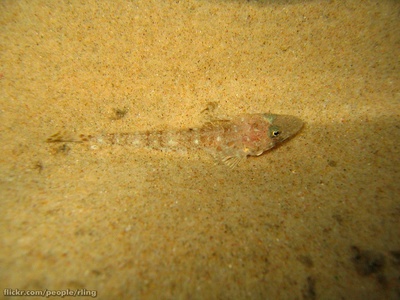
Sand flathead
Sand flathead are ambush predators that bury in sandy substrate with only eyes exposed. Common in estuaries and sheltered bays, they consume fish and crustaceans, show rapid growth and are frequently caught by recreational anglers along eastern and southern Australia.
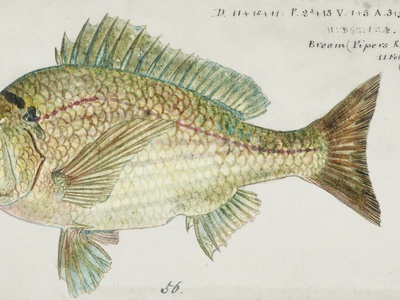
Black bream
Black bream are sturdy estuarine fish with dark, laterally compressed bodies and strong jaws. Found in rivers, lakes and coastal lagoons, they feed on crustaceans and molluscs, and are a favorite among estuary anglers for their consistent fights and accessibility.
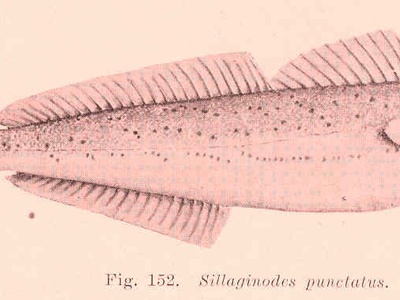
King George whiting
King George whiting are prized, elongated whitings with a silvery flank and slender body. Inhabiting seagrass beds and sandy bottoms, they are a premier table fish in southern Australia and are targeted by both commercial and recreational fishers.
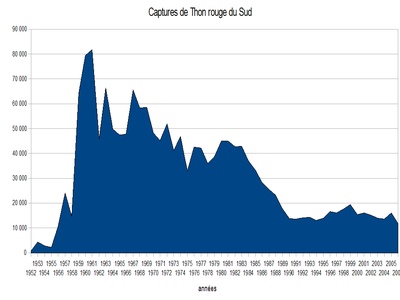
Southern bluefin tuna
Southern bluefin tuna are migratory, deep-bodied pelagics prized for sashimi markets. They undertake long-distance movements across southern oceans, school in large numbers, and support major fisheries managed internationally due to their high commercial value and past overexploitation.
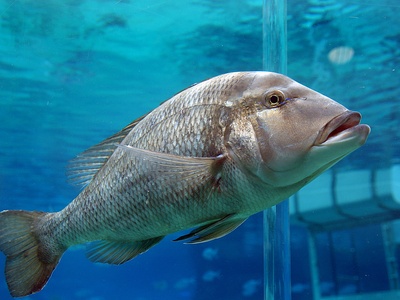
Giant grouper
Giant grouper are enormous reef groupers with massive mouths and mottled brown coloration. Occupying coral and rocky reefs, they can swallow large prey, are slow-growing and long-lived, and are protected in parts of Australia to conserve breeding populations.
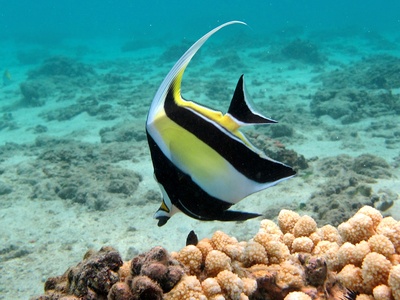
Moorish idol
Moorish idols are striking reef fish with compressed bodies, vertical black and white bands and elongate dorsal filament. They live on coral reefs, feed on sponges and algae, and are difficult to keep in aquariums despite their attractive appearance.
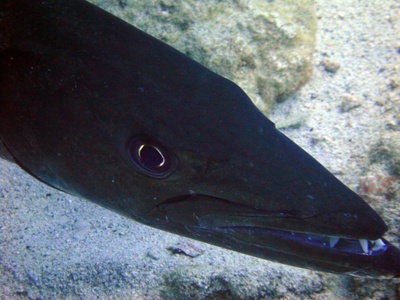
Longfin eel
Longfin eels are elongated freshwater fish that migrate to the sea to spawn. Found in rivers and lakes across eastern Australia, they can live for decades, grow to large sizes and are culturally and ecologically significant in many communities.
